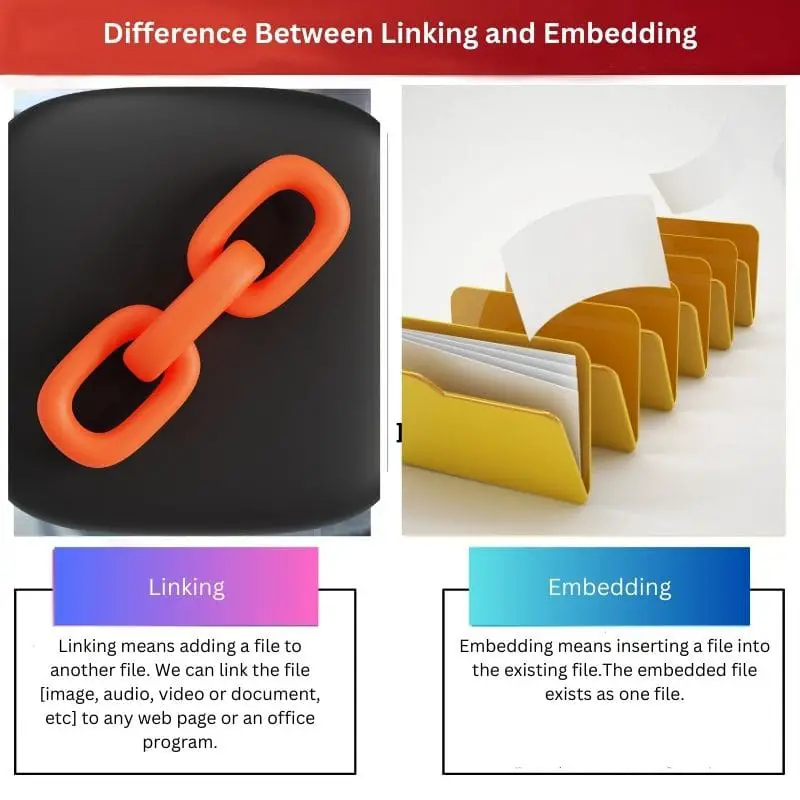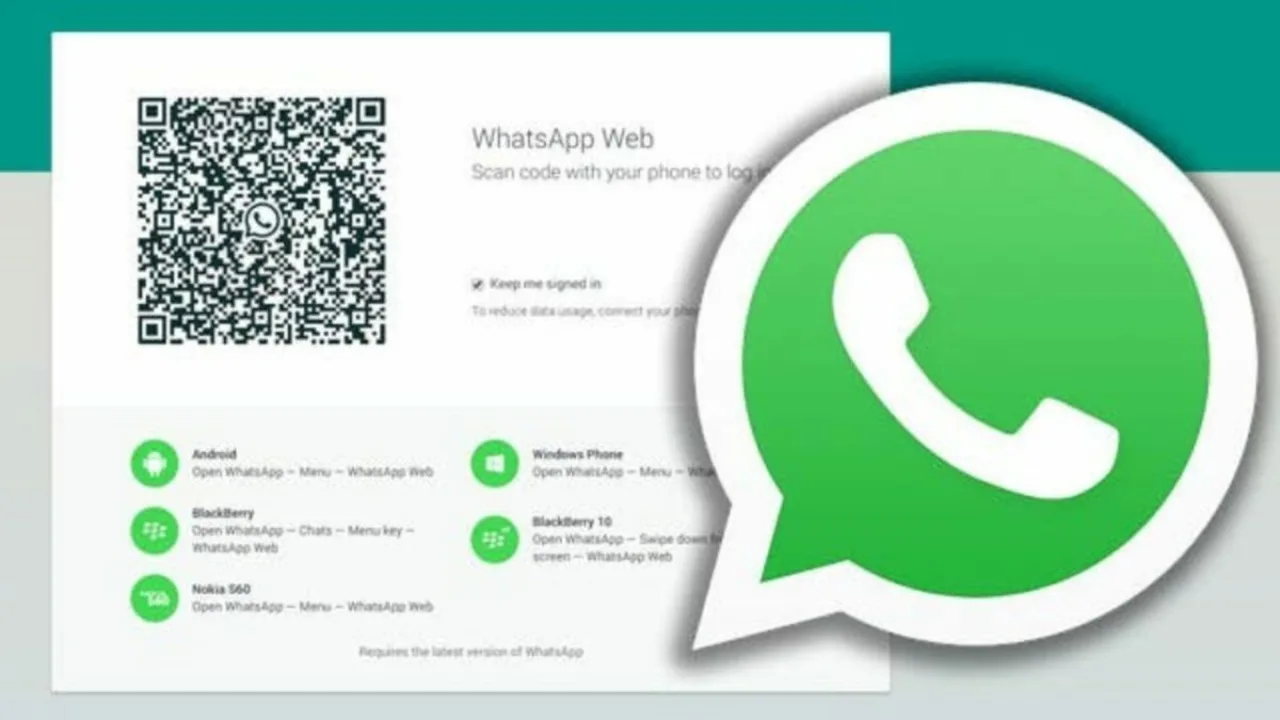We can embed or link any file, object, image, or audio to a document. The document can be a Word file or an Excel spreadsheet.
Whenever you are reading a blog and that page redirects you to a different page [let’s say YouTube] when you click on a link in the page, then that is known as linking, and if that blog has a pop-up of the same video displaying the relevant content in the blog page itself then it is known as embedding.
Key Takeaways
- Linking connects an external file to a document without incorporating its content directly.
- Embedding incorporates an external file’s content directly into a document.
- Linked files can be updated independently, while embedded files become part of the document.
Linking vs Embedding
Linking is used to provide access to external content without including it in the current document. Embedding is the process of physically incorporating the entire content of a file or document into another rather than being referenced externally. This can include text, images, audio, video, or other types of files.

The data in linking is input from another file and reflects the latest updates to the spreadsheet. To use the information in the linked object, the user must visit another page dimension.
The objects that a user links need access or permission to view as the link redirects to a new page.
The data in embedding is a copy of another file, website, or document. Embedded files stay on the same page that the user is viewing.
The embedded object is the source file/document, and the increase in the size of the source document, i.e. The embedded object, changes the destination file.
Comparison Table
| Parameters of Comparison | Linking | Embedding |
|---|---|---|
| Meaning | Linking means adding a file to another file. We can link the file [image, audio, video or document, etc] to any web page or an office program. | Embedding means inserting a file into the existing file.The embedded file exists as one file. |
| Situation of Object | Users link the object created by another application software into a document. | Users copy an object to the destination document, the copy of the object is stored in the document. |
| File Size | The size of the file doesn’t have any significant changes, such as an increase as the linked object increases. | As the destination file storesA copy of the embeddedobject, the file size willdoes not take up much size. |
| Usage | Linking a movie to a PowerPoint document. | Linking an excel graph to a word document. |
| Changes | Any changes in the linked file lead to the changes in the destination file. | Any changes in the embedded file don’t lead to any changes in the destination file. |
What is Linking?
In simple words, linking means inserting an object, file, audio, or video in a link to insert that link into the main content so that it can take viewers to another content page to view it.
The term “linking” or “object linking” refers to combining various files generated by a compiler. It’s also the name given to integrating object files and library files to create a single executable file.
It can also refer to an application’s runtime in conjunction with runtime libraries, which may or may not already be in memory. This is a technique for reducing the amount of disc storage required by several apps that share the
same libraries.
The linked data is stored in the main data. The objects in the link may display graphs or charts as well. For instance, an external application chart, such as an Excel spreadsheet, can be inserted into a Word application.
Here, the user can manipulate the data provided in the Excel chart sheet in the Word document. The procedure is used to share relevant information between the office programs.
Any object that is as a table, file, chart, and image, etc., displaying other information is known as the source file and this file that can be inserted into a different office program is known as the destination file.

What is Embedding?
Converting data to a feature representation in which distance notions can represent some attributes is known as embedding.
For example, a model trained on speech signals for speaker identification might convert a speech snippet to a vector of integers, allowing another snippet from the same speaker to be separated from the original vector by a minimal distance (e.g., Euclidean distance).
Alternatively, you might convert the speech signal based on the word that is said in the signal using a different embedding function.
If the same word is pronounced in both snippets, the encoded representations of the two speech signals will have a minimal Euclidean distance between them.
An Example of Embedding-Image Embedding [How it Embeds]
It creates a list of images and uploads or evaluates them on a remote server. To measure a matrix, deep learning models are used for each image. It gives you a better column data table (picture describes).
Photos can be imported as image paths in a table or using a widget to import photos. In this scenario, a three-row column with a type equal to the image label in the third row is required in the image direction.

Main Differences Between Linking And Embedding
- The linked file becomes a separate part of the presentation. But an embedded file becomes a part of the presentation.
- Any updates in the linked file are automatically reflected in the destination file. In contrast, any updates in the embedded file do not reflect in the destination file and have to make changed manually.
- In the link, users must have access to the file to view or the right permission of the program via the link. In embedding, the user may not have to face this kind of inconvenience while viewing the file.
- If a user wishes to include videos on his website, the option to link videos is not a better option. But if a user wants to include videos on his website, then the option to embed videos is a better option.
- The user can have complete control over the source file in linking. Whereas the user cannot have complete control over the source file in embedding.







